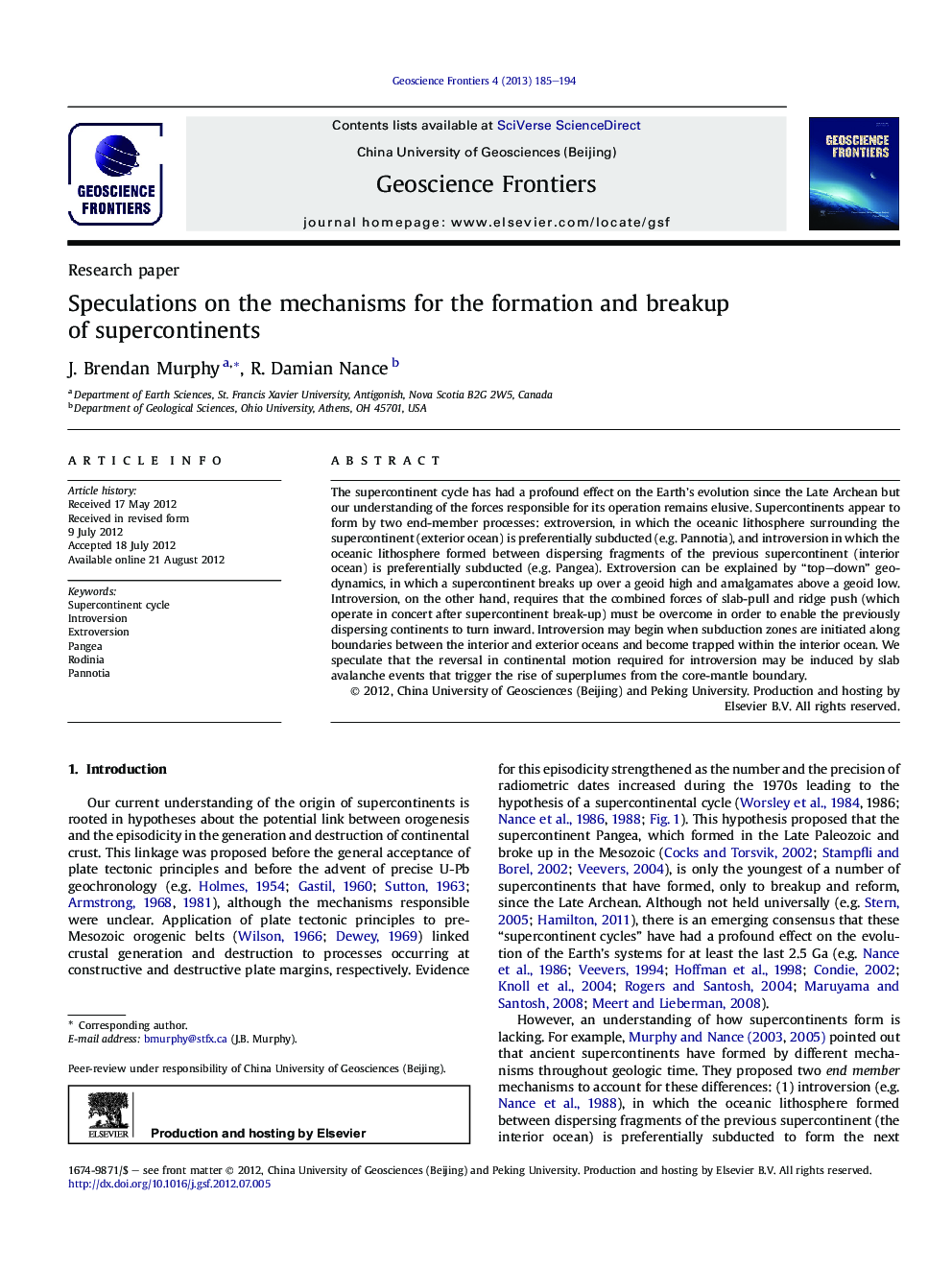| Article ID | Journal | Published Year | Pages | File Type |
|---|---|---|---|---|
| 4681663 | Geoscience Frontiers | 2013 | 10 Pages |
The supercontinent cycle has had a profound effect on the Earth's evolution since the Late Archean but our understanding of the forces responsible for its operation remains elusive. Supercontinents appear to form by two end-member processes: extroversion, in which the oceanic lithosphere surrounding the supercontinent (exterior ocean) is preferentially subducted (e.g. Pannotia), and introversion in which the oceanic lithosphere formed between dispersing fragments of the previous supercontinent (interior ocean) is preferentially subducted (e.g. Pangea). Extroversion can be explained by “top–down” geodynamics, in which a supercontinent breaks up over a geoid high and amalgamates above a geoid low. Introversion, on the other hand, requires that the combined forces of slab-pull and ridge push (which operate in concert after supercontinent break-up) must be overcome in order to enable the previously dispersing continents to turn inward. Introversion may begin when subduction zones are initiated along boundaries between the interior and exterior oceans and become trapped within the interior ocean. We speculate that the reversal in continental motion required for introversion may be induced by slab avalanche events that trigger the rise of superplumes from the core-mantle boundary.
Graphical abstractFigure optionsDownload full-size imageDownload as PowerPoint slideHighlights► Supercontinents form by two end-member processes: extroversion and introversion. ► Extroversion can be explained by top–down geodynamic models. ► Introversion requires reversals in plate motions, maybe triggered by a superplume.
